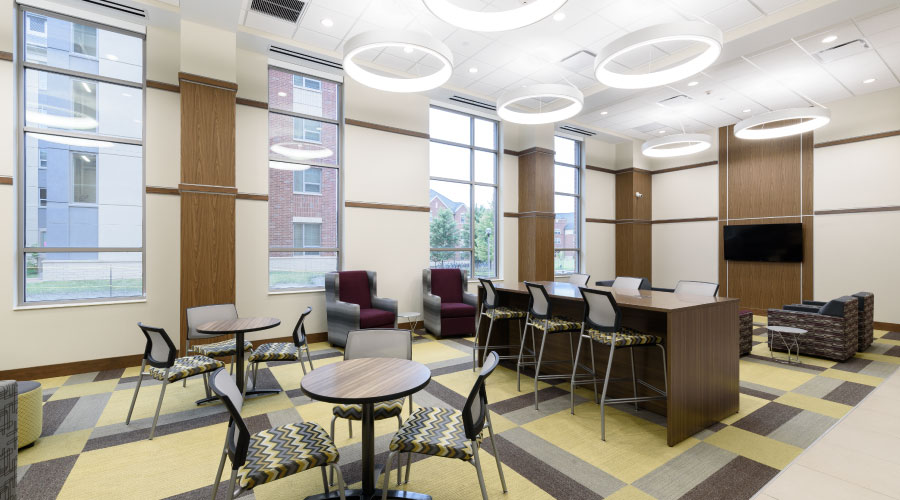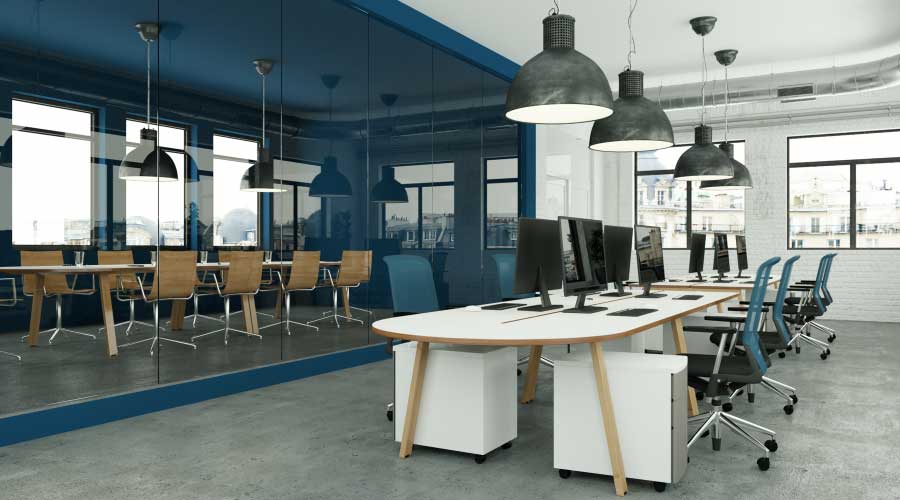Staff Plays Big Role in Effective Lighting
But no matter how the lighting system has been designed, what can the facilities staff do to help?
Don't re-lamp with lamps from different manufacturers or with different model numbers. Different color temperature lamps obviously look different, but even the same color temperature lamps from different manufacturers look different because they all use different proprietary mixes of phosphors. Having six lights in a space with all different shades of white feels very sloppy.
Temperature and Type
The designer of the electric lighting system will have selected color temperature and lamp type to achieve a desired effect. Maybe it's 4,000K from one manufacturer because that crisp whiteness is best with that stone. Maybe it's 3,000K from another because that renders skin tones the most pleasantly.
It may be cheaper to use a lower color rendering (CRI) lamp, but it's not worth it if everyone looks like corpses. It also makes it more difficult to discern differences in colors; red especially tends to look dull and dead. In general if it has a CRI below 80, it shouldn't be used.
Screw-in compact fluorescent or LED lamps may fit in a fixture, but they won't provide the same quality (and sometimes even quantity) of light that the original incandescent lamp did. These fixtures are designed around a specific lamp, and reflectors can function significantly more poorly with a different one.
As almost all states have adopted energy codes to which designs must comply, very limited amounts of incandescent make it onto a project any more, and those are generally used for highly specific purposes for which fluorescent, LED, or metal halide just are not suited. Incandescent is less efficient than other sources, but it still has better color quality, true full range dimming, and is a point source that allows great optical control.
In addition to temperature and type, keep these things in mind as well when replacing lamps.
- Group re-lamp if possible. It takes more effort to re-lamp lamps as they burn out than it does to simply re-lamp all fixtures at scheduled intervals. This won't prevent the necessity to do some spot re-lamping, but there will be far less of it.
- Where wet location fixtures are used, the manufacturer may have particular instructions for re-lamping. These should be followed so as to avoid water ingress and fixture failure.
- A competitive bid process and the review of any proposed substitutions should ensure that the end product meets expectations. Projects that don't take these steps are asking for trouble.
There's always the chance that the price of steel may jump sharply, or some other factor may affect the total cost of the budget, and the lighting portion will need to shrink to help compensate. If a budget needs to shrink by 5 or 10 percent, it's not too difficult to deal with, and a wonderful project can still be completed. However, if the budget needs to drop by 30 percent or 50 percent, it's best for the end result if the project is redesigned rather than simply remove fixtures and respecify to very low quality product.
Achieving Efficiency
What does it mean to be energy efficient, and how can this be accomplished?
All of these things can help to reduce energy consumption in a lighting installation:
- Efficient light sources such as fluorescent, LED, metal halide, halogen IR.
- Efficient light fixtures. Some fixtures can trap as much as 90 percent of light within the fixture. Conversely, some direct/indirect linear fluorescent fixtures can direct as much as 90 percent out of the fixture. Although as a tactic, it's generally more effective to provide direct lighting to a space, if the fixtures used are only 70 percent efficient, a direct/indirect fixture that's 90 percent efficient might actually provide more light to the work surface.
- The more a fixture is dimmed, the less power is consumed, although this is not a true linear relationship. When daylight dimming systems are included and properly designed, during the sunny part of the day some spaces might consume no electricity to power light fixtures.
If attention can be paid to all of these details and the appropriate weight given to each in order to achieve a balanced solution, there's no reason that a final installation can't be provided that looks great, provides a very comfortable environment, minimizes energy consumption, and is relatively easy to maintain.
It's not a short process, it's not an easy process, and you really have to see it with your own eyes in order to make an educated decision. Which can actually be fun and interesting if you or one of your subordinates likes that sort of thing — which some people actually do.
Frank Feist is a senior designer with MCLA, a full-service architectural lighting design firm. Feist, who holds a degree in mechanical engineering from Virginia Tech, has worked on more than 200 projects.
Related Topics:













